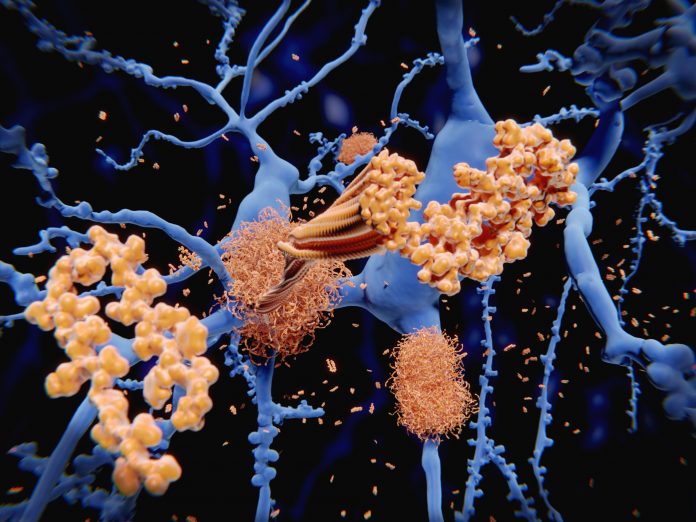
Researchers, led by a team at the Pompeu Fabra University (UPF) in Barcelona, Spain, have identified new genes that modulate the toxicity of β-amyloid, the protein that is largely responsible for the development of Alzheimer’s disease. In total, the study identifies 238 genes that either provide protection or increase the toxicity of the β-amyloid protein.
Among the 81 that increase β-amyloid toxicity, the investigators said on gene, SURF4 stands out based on its role in controlling intercellular calcium that increases the toxicity of the β-amyloid protein. The study is published in the International Journal of Molecular Sciences.
“Calcium is one of the most important messengers that transfer information from the outside to within cells. It is involved in almost all cell functions,” said study lead Francisco J. Muñoz faculty member in the Laboratory of Molecular Physiology, Department of Medicine and Life Sciences at UPF. “Hence, when the Surf4 protein is overexpressed, which decreases calcium entry and aborts the cellular processes dependent on it, neurons cannot function and they become very sensitive to amyloid toxicity.”
To identify the genes involved in regulating AD, the team analyzed 5,154 mutants of the yeast Saccharomyces cerevisiae with the expression of each gene eliminated. “In the present work, we used Saccharomyces cerevisiae to perform a genome-wide screen to identify regulations of amyloid toxicity. The choice of this model system was based on its reduced complexity and on the similarity of most of its molecular signaling pathways to mammals, including those regulating autophagy, apoptosis, mitochondrial function, cellular trafficking and protein homeostasis,” the researchers noted.
Each of the 5,154 mutants was crossed with other yeasts of the same strain that overexpress the human β-amyloid protein and the viability of these cells was analyzed over several days. In addition, a text mining analysis was performed to identify other genes related to the regulation of β-amyloid protein toxicity.
The investigators said that this new research confirmed that the overexpression of β-amyloid in the yeast secretory pathway makes it an appropriate model to help identify modifiers of β-amyloid in the entire yeast genome.
“Our results suggest that these genes, whose deletion reverts (β-amyloid) toxicity, probably contribute to its toxicity since when they are knocked out, (β-amyloid) does not exert its cytotoxic effects as it does in controls. On the other hand, genes whose deletion enhances (β-amyloid) toxicity can be identified as protectives from (β-amyloid) toxicity since when they are knocked out, (β-amyloid) toxicity is increased,” the researchers wrote. “Alternatively, the effect of these genes can be interpreted as belonging to critical molecular pathways responsible for (β-amyloid) toxicity, whose absence would cause an increased vulnerability by some other proteins from the same cellular pathways.”
The identification of SURF4 as a prominent accelerator of β-amyloid protein toxicity damages now makes that gene a prime new target as a potential key to regulating the activity of β-amyloid’s effect on the development of Alzheimer’s disease.













